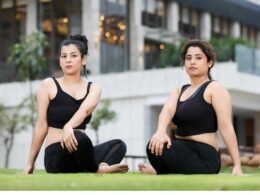In today’s world, fashion and beauty are no longer just industries—they are dynamic expressions of identity, culture, and creativity. Once governed by rigid trends and seasonal dictates, the modern landscape of style has transformed into a fluid, inclusive, and innovative realm where personal expression reigns supreme.
Redefining Beauty: The Era of Authenticity
Gone are the days when beauty was confined to narrow standards. Today, diversity is not just accepted—it’s celebrated. From freckles and natural hair textures to various body shapes and skin tones, the beauty industry is embracing the full spectrum of humanity. Campaigns now spotlight real people over airbrushed perfection, and brands are shifting their focus from unattainable ideals to empowering authenticity.
Social media platforms have played a major role in this change. Influencers and everyday users alike use their platforms to challenge stereotypes, review products honestly, and show beauty in all its raw, unfiltered forms. The rise of skin positivity, for instance, encourages individuals to embrace their skin conditions—acne, vitiligo, hyperpigmentation—not hide them.
Fashion as a Canvas for Identity
Fashion is no longer about simply following trends—it’s about creating them. People are blending vintage pieces with futuristic silhouettes, high-end designer items with thrifted treasures, and traditional garments with contemporary twists. This melting pot of styles reflects a broader cultural shift: a move toward individuality and self-expression.
Moreover, gender-fluid and unisex fashion is gaining momentum, disrupting binary norms and redefining how clothes are categorized and worn. Designers are now focusing less on “men’s” and “women’s” collections and more on garments that feel right to the wearer, regardless of gender.
Sustainability: The New Luxury
With growing awareness about climate change and ethical labor practices, sustainability has become a cornerstone of modern fashion and beauty. Consumers are demanding transparency—where their clothes are made, how ingredients are sourced, and what the environmental impact is.
Fashion brands are innovating with biodegradable fabrics, recycled materials, and circular fashion models. In beauty, clean and cruelty-free products are becoming the norm rather than the niche. Brands that once prioritized profit above all are now investing in eco-conscious practices—not just to meet consumer demand, but because the planet requires it.
The Role of Technology
Technology continues to reshape the fashion and beauty industries. Virtual try-ons, AI-generated skincare routines, and 3D-printed garments are making style more accessible and personalized. Augmented reality (AR) mirrors allow customers to try on makeup or clothes without touching a product, merging convenience with hygiene and safety—especially crucial in a post-pandemic world.
Meanwhile, digital fashion—clothing that exists solely in the virtual world—is on the rise, fueled by gaming culture, the metaverse, and NFT art. It challenges the very notion of what fashion is and can be, opening up new dimensions for self-expression.
The Future Is Personal
Ultimately, the future of fashion and beauty lies in personalization. As boundaries continue to blur and innovation advances, individuals are empowered to craft their own aesthetic narratives. Whether it’s through a bold lipstick shade, a culturally inspired outfit, or a virtual designer jacket worn in a game, expression is the new standard.
Fashion and beauty today are not just about looking good—they’re about feeling seen, heard, and understood. And in a world where uniqueness is finally being recognized as the true mark of style, the possibilities are endless










